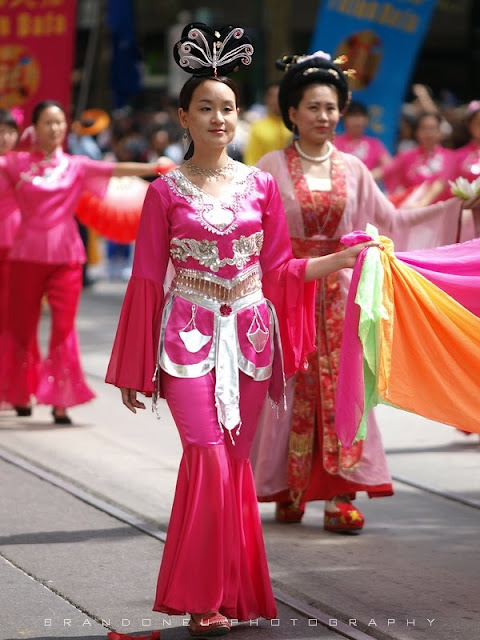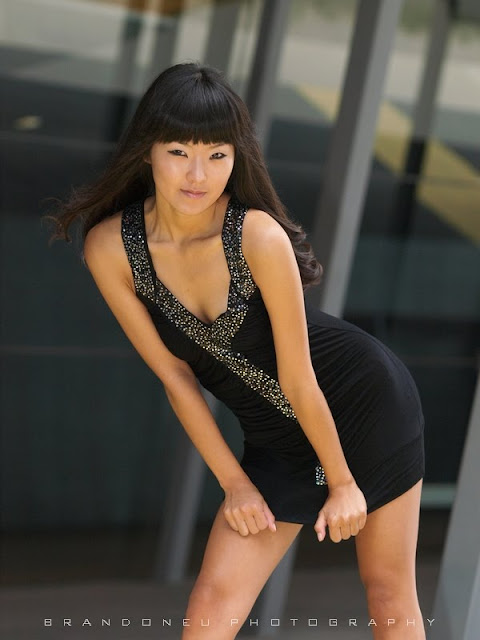So, you've just invested some money into your first DSLR / or you're still on the lookout for one, and you'd like some lenses to start out with. I've compiled a list of lenses for most brands that should be in most of your bags, and are be more than sufficient for most general purpose photography - eg. landscape, semi macro, portraiture.
Note: This article is neither conclusive nor exhaustive (since I'm mostly an Olympus user), but most review sites would have common recommendations. This article is valid as of January 2010 and doesn't take into account future lens upgrades unless the author decides to update this post.
Do bear in mind that although I use the term 'beginner', some pros also use these lenses in their day to day work because of excellent price / performance ratio. It makes good business sense too.
Terminology
VR (Vibration Reduction) / IS (Image Stabilisation) - enables the user to handhold the lens with a gain of ~ 3 stops in typical field conditions.
ED - Extra-low Dispersion glass elements excel at correcting chromatic aberration and eliminating secondary spectrum to produce outstanding image resolution and clarity
AF-S (AF-Silent Wave Motor) / USM (Ultrasonic motor) / SDM (Pentax) / SSM (Sony) / SWD (Olympus): the motors in the lens that enable the glass to move and help auto focusing
DX - For use with Nikon Cameras with cropped sensors, eg. D40, D300, D80. Not compatible with Full frame (FX) bodies, eg. D700
Nikon

Nikkor AF-S 18-55mm f/3.5-5.6 G ED DX II - The de facto kit lens in every starter Nikon DSLR kit. Truly remarkable image quality in a small, light and inexpensive package. Recommended by
Ken Rockwell.
Nikkor AF-S 16-85mm f/3.5-5.6G ED VR DX - probably still the best DX standard zoom lens in Nikon mount to date. The implementation of VR and SWM make this an attractive package in a 24-128mm equivalent field of view. Good resolution at all focal lengths.
Nikkor AF-S 55-200mm f/4-5.6G IF-ED DX VR - for telephoto use. VR helps you to get sharper images in low light conditions. Good image quality for a kit lens. Its compact and light too.
Nikkor AF-S 18-200mm f/3.5-5.6 G IF-ED VR II DX - one of the most popular nikon lenses, but in my opinion its quite over-rated. 11X zoom range coupled with VR technology make this lens pretty handy if you hate switching lenses.
Nikkor AF-S 70-300mm f/4.5-5.6 G IF-ED VR - sharp and relatively cheap full frame lens for telephoto applications, as recommended by
Moose Peterson. VR is very welcome too.
Nikkor AF-S DX 10-24mm f/3.5-4.5G ED - A super wide angle lens that replaces the Nikkor AF-S DX 12-24/4 G. Image quality is a bit compromised at 10mm, but its still quite good.
Nikkor AF 50mm f/1.8 D - cheap price tag, has relatively large aperture for low light conditions and to separate subjects from the background. Slow and noisy AF mechanism.
*Nikkor AF-S 35mm f/1.8G DX - I think this is a more practical fast aperture prime lens for Nikon DSLR users over the 50mm f/1.8. Slightly wider than the 50mm which makes it more flexible for general purpose photography. Will autofocus on ALL Nikon DSLRS; the D3000, D40 and D5000 lack the built-in autofocus motor to drive the Nikkor AF 50mm f/1.8D
Canon
Canon EF 50mm f/1.8 II - the nifty fifty. cheapest lens in canon line up. Large aperture is definitely welcome. One of my friend's copy is so sharp at f/1.8, he
brags about it heaps. Unfortunately to get that result, you'd have to use manual focus and the 10X live view option on the 5D2.
Canon EF-S 17-85mm f/4-5.6 USM IS - natural upgrade choice from the 18-55 kit lens. Addition of IS and ring-type USM drive with full-time manual focusing is definitely welcome.
Canon EF-S 15-85mm f/3.5-5.6 IS USM - upgraded version of the 17-85. Delivers top-tier image quality over an excellent general purpose focal length range in a nicely-sized/weighted/built body with great AF and an excellent implementation of Image Stabilization.
Canon EF 70-300mm f/4-5.6 USM IS - offers very high performance throughout the zoom range without the significant drop in quality at longer focal lengths.
Canon EF-S 10-22mm f/3.5-4.5 USM - very good optical results and great build quality for an ultra wide angle lens.
Canon EF 70-200mm f/4 USM L IS - one of Canon's sharpest telephoto zoom lenses with excellent build quality and a 4 stop IS mechanism.
Pentax
Pentax SMC-DA 18-55mm f/3.5-5.6 AL - very good build quality (compared to other kit lens offerings), but nothing spectacular in the optical department.
Pentax SMC-DA 16-45mm f/4 ED AL - very good image and build quality. good speed and AF accuracy
Pentax SMC-FA 50mm f/1.4 - cheap and fast (aperture-wise). One of my favorites.
Pentax SMC DA 18-250mm f/3.5-6.3 ED AL [IF] - does a decent job as a general purpose lens, good build quality
Sony
Zeiss ZA 16-80mm f/3.5-4.5 DT - offers better image quality than Sony's 18-70mm f/3.5-5.6 DT. Decent build quality.
Sony 70-300mm f/4.5-5.6 SSM G - high quality telephoto lens and possibly the best of its class.
Sony 50mm f/1.4 - one of Sony's fastest primes, average performance at f1.4
Olympus
Olympus Digital Zuiko 35mm f/3.5 macro - great image quality at a very affordable price.
Olympus Zuiko Digital 14-42mm f/3.5-5.6 ED - good image quality in a small, light and well built package.
Olympus Digital Zuiko 40-150mm f/4-5.6 ED - as the above
Olympus Digital Zuiko 9-18mm f/4-5.6 ED - For ultra wide angle lovers, this is definitely a must have for its small size and superb image quality
Olympus Zuiko Digital 12-60mm f/2.8-4 ED SWD - one of the best standard range zooms in the market, with excellent image and build quality
Olympus Zuiko Digital 50-200mm f/2.8-3.5 ED SWD - excellent build and image quality in a small and relatively lightweight package with an equivalent range of 100-400mm.
Third Party lenses
3rd party offerings can offer image quality which rival proprietary lenses at a cheaper price, but they have more quality control issues. Eg., it may take you at least 3 tries to find a truly sharp copy of the same lens.
Tamron
Tamron AF 17-50mm f/2.8 SP XR Di II LD Aspherical - a much talked about lens, very good image quality at a lower price point compared to proprietary zoom lenses.
Tamron SP AF 70-200mm F2.8 Di LD (IF) Macro - excellent image quality at an affordable price, but it's autofocus motor is slow and noisy.
Sigma
Sigma AF 18-50mm f/2.8 DC EX Macro - decent build and image quality, but the Tamron 17-50 /2.8 is recommended more than the Sigma.
Sigma AF 55-200mm f/4-5.6 DC - good image quality for a kit lens, but it has some shortcomings , eg. rotating front element, so its not good for polarisers.
Sigma AF 10-20mm f/4-5.6 HSM EX DC - good image performance for a third party ultra wide angle lens, but newer designs from proprietary companies have made this it a bit obsolete.
Sigma AF 70-200mm f/2.8 EX APO HSM DG - good image quality that rivals proprietary lenses, sturdy build quality (without weathersealing), no IS / VR makes this lens a little challenging to use in low light.
Tokina
Tokina AF 12-24mm f/4 AT-X Pro DX - very similar image performance to the Canon 10-22 at a cheaper price and slightly better build quality, but unfortunately its 2mm less wide than the canon.
*Tokina 11-16mm f/2.8 DX - This has the fastest maximum aperture (f/2.8) of any of the wide angle zooms for the smaller sensor (DX, Canon APS-C) DSLRs: it's 1 full stop brighter than the older Tokina 12-24mm and 2/3 stop brighter than the Canon 10-22mm and Nikon 10-24mm at the wide setting. It seems to test very well for sharpness in the far corners, a bit better than the older and much more expensive Nikkor 12-24mm.
Tokina AF 50-135mm f/2.8 AT-X Pro - Good resolution performance except at 135mm. Superb build quality, although the old screw-drive AF mechanism can be improved.
Conclusions
Do note that what lenses that you choose depends on your needs, budget, etc and of course camera system. Although a lens seems like a good bargain, hold off purchasing it until you test it yourself first and are very certain that you'll appreciate it in daily use. What's the use of having a whole closet of lenses for bragging rights if you're not using them ?
Reviews marked * are credited to Michael King

























































